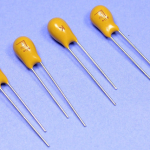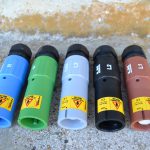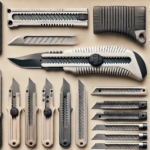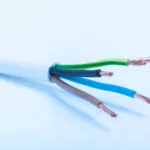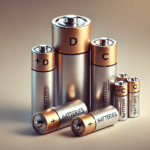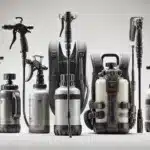
Introduction
Accurate electrical measurements are the cornerstone of countless technologies. However, achieving truly precise readings, especially when dealing with low resistances, can be a tricky endeavour. Entering Kelvin clips—specialised connectors with their unique four-terminal design, eliminate the influence of lead resistance on measurements. This user-friendly guide walks you through the world of Kelvin clips, explaining what they are, their significance, functions, types, and common applications.
Understanding Kelvin Clips: Exploring Their Significance in Electrical Testing
They are also called Kelvin test clips or four-wire sensing clips, are specialised electrical connectors designed to facilitate four-wire measurement, particularly of low resistance. The term “Kelvin” comes from Lord Kelvin, a renowned physicist and engineer who made significant contributions to the field of electrical measurement. Kelvin connectors feature two separate sets of jaws, each insulated from the other with its own wires, where one pair sources the current while the other measures the voltage.
The significance of a Kelvin clip lies in its ability to achieve higher levels of measurement accuracy when compared to standard alligator clips, minimising errors caused by contact resistance. Moreover, these precision clips are made from durable copper or brass with gold or nickel plating, ensuring the best conductivity and corrosion resistance. Their reduced noise, ease of use, compact designs, reliability, and robust compatibility make them indispensable across various settings.
For What Purposes Can I Use Kelvin Clips?
They can be used for a variety of purposes across applications where accurate low-resistance measurement is critical. Some of the main functions include:
- Measuring the resistance of resistors, inductors, and other components.
- Testing the conductivity of materials.
- Measuring contact resistance in switches, relays, and connectors.
- Testing the integrity of PCB traces.
- Measuring the internal resistance of batteries.
- Four-wire resistance measurement in material science research.
How Do Kelvin Clips Work? Basic Operation Principle Explained
The principle behind Kelvin test clips is based on the four-wire or Kelvin connection method. When you use these clips, you attach them directly to the component or section of the circuit where you need to measure resistance. The current is driven across the current wires, and the voltage drop through the resistance is measured through the separate voltage sensing wires. The instrument connected to the clips (like a micro-ohmmeter) calculates the resistance using the known current and the measured voltage.
What are the Standard Types of Kelvin Clips?
They are classified into various types based on their size, current capacity, jaw types, and connections. Each type comes with special features and includes:
Based on Size and Current Capacity
Standard Kelvin Clips – These are medium-sized clips suitable for a wide range of general-purpose measurements. They can handle moderate currents and provide a secure grip on various wire sizes and components.
Mini Kelvin Clips – These are compact, precision clips designed for delicate work and low-current applications. Additionally, they are ideal for measurements on small components and PCBs, electronics testing, and sensitive electrical connections in tight spaces.
High-Current Kelvin Clamps – These are larger insulated clips designed for high-current applications with robust accuracy. They are used for measuring the resistance of conductors, switches, transformers, power supplies, and other high-current devices.
Based on Jaw Type
Alligator/Crocodile Clips – Alligator or crocodile clips are the most common type of Kelvin clips. They feature spring-loaded, serrated jaws that provide a good, temporary grip on wires and components. Crocodile and alligator clips are commonly used in testing, prototyping, and DIY projects.
Pincer Clips – Pincer clips feature pointed jaws designed to grip small wires and component leads in hard-to-reach areas on circuit boards. Furthermore, they provide a strong and reliable hold in electronic testing and repair without damaging the components.
Blade Clips – These clips have flat, blade-like jaws that make reliable contact with flat surfaces and terminals. They are easy to use and are ideal for vehicle wiring, battery testing, and quick repairs.
Based on Connection Type
Screw-Type Kelvin Test Clips – These clips feature screw terminals that allow users to connect to test leads securely. Moreover, they provide a reliable connection for precise four-wire measurements in applications where a stable and vibration-resistant connection is required.
Solder-Type Kelvin Test Clips – They are designed to be soldered directly to test leads, providing a permanent connection. They ensure minimal resistance and enhanced contact stability, making them ideal for laboratory settings, research, and calibration processes.
Banana Plug Kelvin Clips – These clips integrate banana plugs that are compatible with standard banana jacks found on many test instruments.
Kelvin Clips vs. Alligator Clips: Finding the Differences
Typically, 4 wire Kelvin clips look similar to standard alligator clips, but they differ in terms of accuracy, design, and intended use. Kelvin test probes have an insulated design and are particularly designed for low resistance and precise four-terminal measurements. However, they often have coloured or marked areas to help identify which part is for current and which is for sensing. Alligator clips, on the other hand, are simple, general-purpose connectors with serrated jaws for electronics prototyping and electrical work. Here’s a comparison table for Kelvin and alligator clips:
| Feature | Kelvin Clips | Alligator Clips |
| Measurement Accuracy | High, with minimal error | Moderate, prone to contact resistance errors |
| Design | Two jaws for current and voltage paths | Single connection path |
| Common Use | Precision resistance testing | General-purpose electrical work |
Choosing the Right Kelvin Clips for Your Application
When choosing Kelvin clamps, it is essential to consider certain parameters to help you pick the right one for your needs. Some essential considerations include ensuring their current/voltage ratings, jaw opening size, materials, insulation and safety, compatibility, mounting options, brand, and cost.
Common Industries That Use Kelvin Clips
They are critical in scenarios where even minor inaccuracies result in significant discrepancies. They are widely used in:
- Electronics Manufacturing
- Automotive Testing
- Educational Institutes
- Energy Sectors
- Telecommunications Industry
- Aerospace Engineering
- Research Laboratories.
Key Takeaways
Kelvin clips are a must-have electrical connector for anyone seeking precision electrical measurements. By minimising the impact of lead resistance and ensuring stable, repeatable contact, they enable the accurate testing of low-resistance components and systems. With so many options available, it is crucial to evaluate various factors to suit your applications. In essence, their ability to provide precise, noise-free measurements means they are invaluable for industries ranging from consumer electronics to large-scale power systems.








